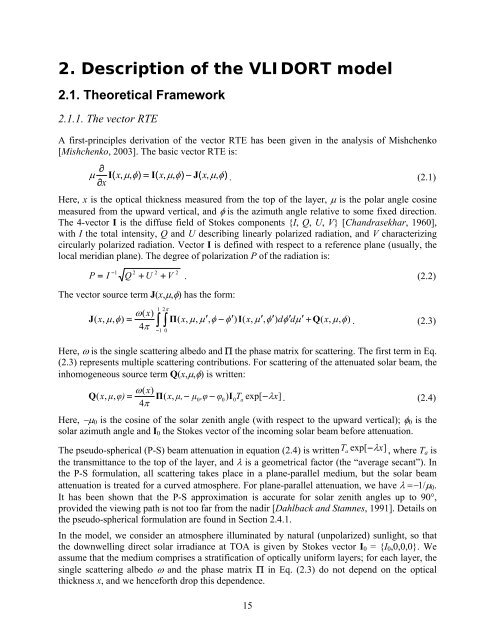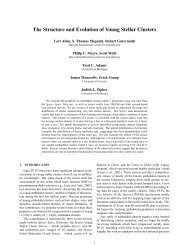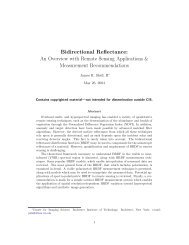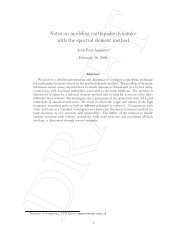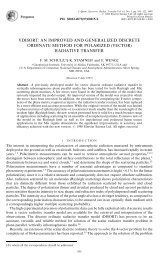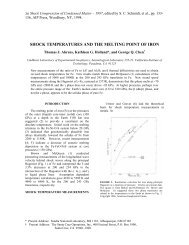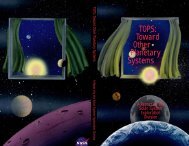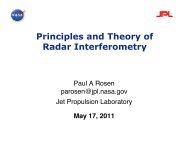VLIDORT User's Guide
VLIDORT User's Guide
VLIDORT User's Guide
Create successful ePaper yourself
Turn your PDF publications into a flip-book with our unique Google optimized e-Paper software.
2. Description of the <strong>VLIDORT</strong> model2.1. Theoretical Framework2.1.1. The vector RTEA first-principles derivation of the vector RTE has been given in the analysis of Mishchenko[Mishchenko, 2003]. The basic vector RTE is:∂μ I( x,μ,φ)= I(x,μ,φ)− J(x,μ,φ). (2.1)∂xHere, x is the optical thickness measured from the top of the layer, μ is the polar angle cosinemeasured from the upward vertical, and φ is the azimuth angle relative to some fixed direction.The 4-vector I is the diffuse field of Stokes components {I, Q, U, V} [Chandrasekhar, 1960],with I the total intensity, Q and U describing linearly polarized radiation, and V characterizingcircularly polarized radiation. Vector I is defined with respect to a reference plane (usually, thelocal meridian plane). The degree of polarization P of the radiation is:P +1 2 2 2= I− Q + U V . (2.2)The vector source term J(x,μ,φ) has the form:1 2πω(x)J ( x,μ,φ)= Π(x,μ,μ′, φ − φ′) I(x,μ′, φ′) dφ′dμ′+ Q(x,μ,φ)4π∫∫. (2.3)−10Here, ω is the single scattering albedo and Π the phase matrix for scattering. The first term in Eq.(2.3) represents multiple scattering contributions. For scattering of the attenuated solar beam, theinhomogeneous source term Q(x,μ,φ) is written:ω(x)Q ( x,μ,φ) = Π(x,μ, − μ0,φ− φ0) I0Ta exp[ −λx]. (2.4)4πHere, −μ 0 is the cosine of the solar zenith angle (with respect to the upward vertical); φ 0 is thesolar azimuth angle and I 0 the Stokes vector of the incoming solar beam before attenuation.The pseudo-spherical (P-S) beam attenuation in equation (2.4) is written T aexp[ − λx], where T a isthe transmittance to the top of the layer, and λ is a geometrical factor (the “average secant”). Inthe P-S formulation, all scattering takes place in a plane-parallel medium, but the solar beamattenuation is treated for a curved atmosphere. For plane-parallel attenuation, we have λ =−1/μ 0 .It has been shown that the P-S approximation is accurate for solar zenith angles up to 90°,provided the viewing path is not too far from the nadir [Dahlback and Stamnes, 1991]. Details onthe pseudo-spherical formulation are found in Section 2.4.1.In the model, we consider an atmosphere illuminated by natural (unpolarized) sunlight, so thatthe downwelling direct solar irradiance at TOA is given by Stokes vector I 0 = {I 0 ,0,0,0}. Weassume that the medium comprises a stratification of optically uniform layers; for each layer, thesingle scattering albedo ω and the phase matrix Π in Eq. (2.3) do not depend on the opticalthickness x, and we henceforth drop this dependence.15


